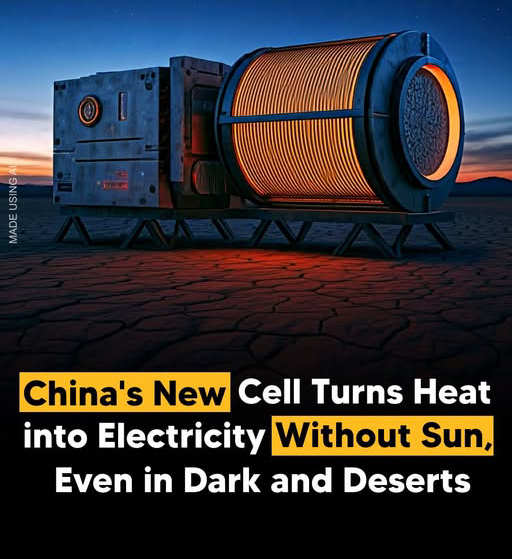Chinese Researchers Develop Hydrovoltaic Cell That Generates Power Without Sunlight

Researchers at the Chinese Academy of Sciences (CAS) have made a huge step forward by revealing a completely new technology: a sealed hydrovoltaic cell that can keep making energy even when there is no sunlight. This brand-new gadget is a big step forward in finding green energy solutions, and it claims to be able to work in deserts, tropical jungles, and even underground.
Traditional solar cells get their power from sunlight. This new hydrovoltaic cell, on the other hand, gets its power from the way water interacts with some surfaces. Researchers have used carbon black and tissue paper, among other things, to make a special internal circulation effect that gives the gadget its power. Because of this process, it can keep making energy even when the sun isn't out.
The fact that this technology can work in dark and difficult environments is one of its most impressive features. Solar panels can only make energy during the day or when the sky is clear, but the hydrovoltaic cell can do it without sunlight. Because of this, it works great in places with extreme weather or little sunlight, like deserts or thick tropical rainforests. It can even work underground, which means it can be used to make energy in places that are hard to get to or are in rural areas.
The experts put the cell to the test in real life, and the results are amazing. The amazing thing is that the hydrovoltaic cell ran nonstop for 160 hours with very little water use. This was the time when it could make electricity by taking heat from its surroundings. The heat from the environment is used to turn water into vapour, which is then used to make energy. The fact that the technology can make electricity without steady sunlight or water makes it even more environmentally friendly.
It's possible that this big step forward will help us use less fossil fuels. Most traditional energy sources are bad for the earth, but this hydrovoltaic cell is a better, cleaner option. It makes new ways to make energy possible in places where traditional ones like wind and solar power wouldn't work because it can work in such harsh conditions.
Along with being good for the environment, the cell's ability to work in harsh situations makes it a flexible and reliable way to make energy. This new technology could make a big difference in the worldwide push for more sustainable energy solutions, whether it's for powering off-grid communities, study stations in the middle of nowhere, or areas that have been hit by disasters.
In general, this discovery is a big step forward in the progress of renewable energy systems. The world is still looking for fossil fuel alternatives. New technologies like this hydrovoltaic cell give us hope for a better, more sustainable future.
--
